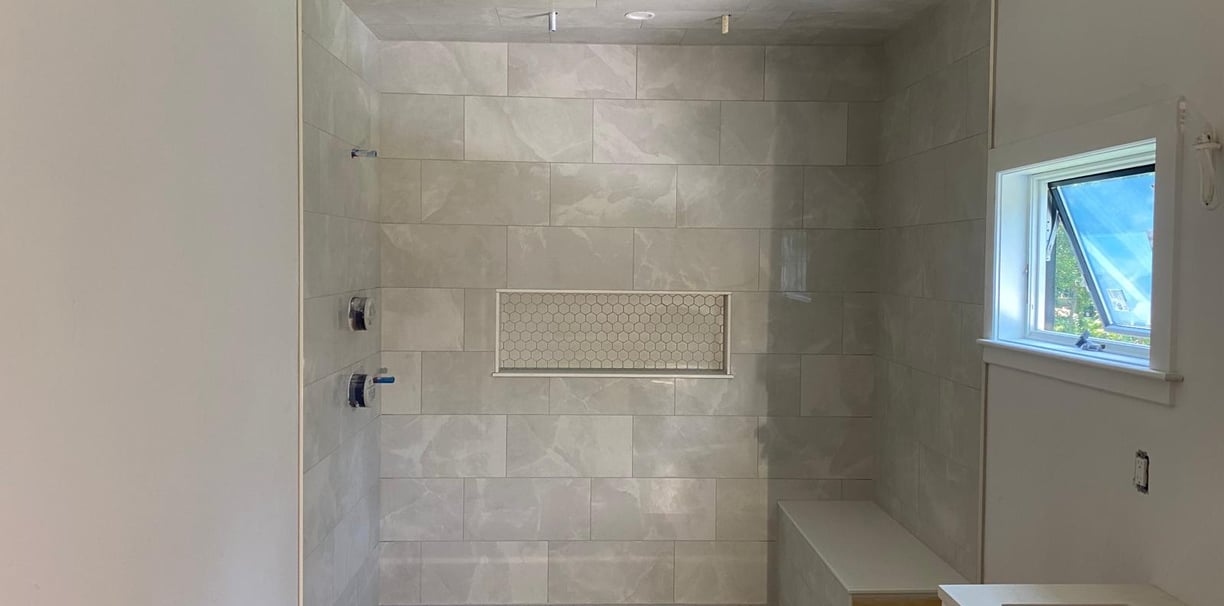Mastering Tile Installation: Your Comprehensive Step-by-Step Guide
Learn how to install tiles like a pro with our step-by-step guide. From preparation to finishing touches, we've got you covered. Discover the secrets to successful DIY tile installation. Our guide walks you through each step, ensuring a beautiful result. Looking to install tiles yourself? Our beginner's guide has everything you need to know, from tools to tips for a flawless finish.
Adeir Mendes
2/1/20243 min read


1. Introduction to Tile Installation
Tile flooring offers a myriad of benefits, from its timeless aesthetic appeal to its durability and easy maintenance. Whether you're revamping your kitchen, bathroom, or any other space, tiles can elevate the ambiance while standing the test of time. However, the key to unlocking these benefits lies in proper installation. A meticulously installed tile floor not only enhances the visual appeal of your space but also ensures its longevity.
In this comprehensive guide, we'll walk you through the entire process of tile installation, from the essential tools and materials needed to the final touches and maintenance tips. By the end, you'll feel confident to embark on your tiling project, whether you're a seasoned DIY enthusiast or a novice homeowner.
2. Tools and Materials Needed
Before diving into the installation process, it's crucial to gather all the necessary tools and materials. Among the essential tools are a tile cutter, trowel, spacers, level, measuring tape, and a notched trowel. Additionally, you'll need materials such as tiles, adhesive, grout, and sealant.
When purchasing these items, consider visiting reputable hardware stores or specialized tile retailers. Quality tools and materials can make a significant difference in the outcome of your project, ensuring a professional finish that lasts for years to come.
3. Preparing the Surface
Preparing the surface is a critical step that sets the foundation for a successful tile installation. Begin by thoroughly cleaning the surface to remove any debris, dust, or grease. Next, ensure the surface is level, using a level and appropriate leveling compounds if needed. It's essential to also use the right substrate, such as cement backer board or uncoupling membranes, to provide a stable base for the tiles.
In cases where the surface is uneven, consider using self-leveling underlayment to achieve a smooth and flat foundation. Remember, the quality of your substrate directly impacts the final result, so investing time in proper preparation is key.
4. Installing the Tiles
With the surface prepped and ready, it's time to start laying the tiles. Begin by measuring and marking the layout, ensuring proper alignment and symmetry. When applying adhesive, use a notched trowel to create grooves that promote better adhesion. Carefully lay each tile, using spacers to maintain consistent spacing between them.
For corners and edges, you may need to cut tiles to fit. A tile cutter or wet saw can be used for this purpose, ensuring precise cuts that seamlessly integrate into the layout. Take your time during this step to achieve a flawless result that enhances the overall aesthetics of your space.
5. Grouting and Sealing
Once the tiles are in place and the adhesive has cured, it's time to grout the joints. Grout not only fills the gaps between tiles but also provides stability and prevents moisture penetration. Apply the grout using a grout float, working it into the joints at a 45-degree angle. Afterward, clean off any excess grout with a damp sponge, taking care not to disturb the grout lines.
After the grout has dried, typically after 24-48 hours, apply a sealant to protect the grout and tiles from stains and moisture damage. Sealing is especially important in high-traffic areas or spaces prone to spills, such as kitchens and bathrooms.
6. Final Tips and Maintenance
As you admire your newly tiled floor, it's essential to consider proper maintenance to preserve its beauty and integrity. Regularly sweep or vacuum to remove dirt and debris, and mop with a mild detergent as needed. Avoid harsh chemicals or abrasive cleaners that can damage the tiles or grout.
Be proactive in addressing any issues that may arise, such as cracked tiles or loose grout. Prompt repairs can prevent further damage and prolong the lifespan of your tiled floor. Lastly, don't hesitate to reach out for assistance or advice if you encounter challenges along the way.
In conclusion, tile installation is a rewarding endeavor that adds value and elegance to your home. By following this comprehensive guide and utilizing the tips provided, you can achieve professional results and enjoy your beautifully tiled space for years to come. Remember, the journey doesn't end with installation—ongoing maintenance is key to preserving the beauty and functionality of your tiled floor.
